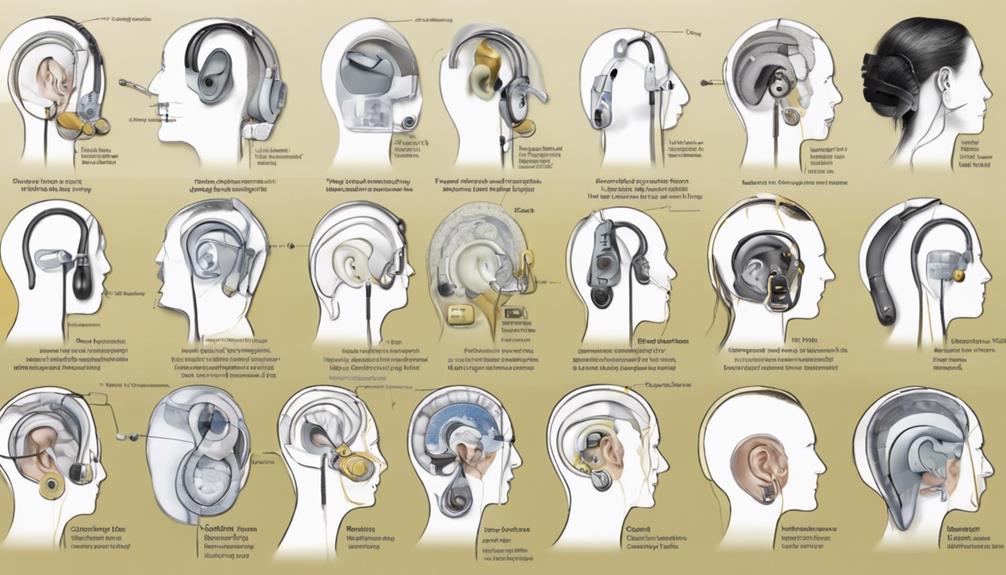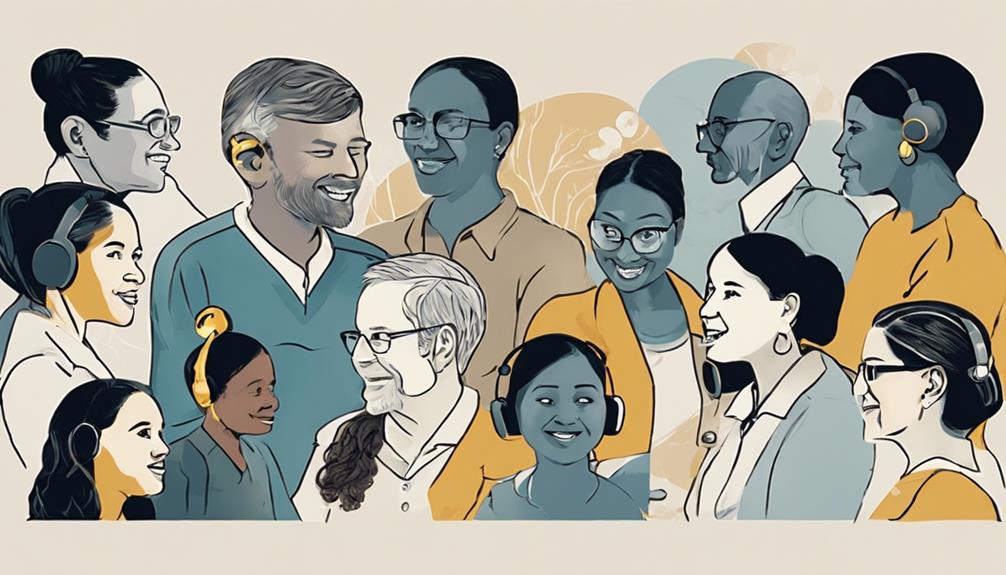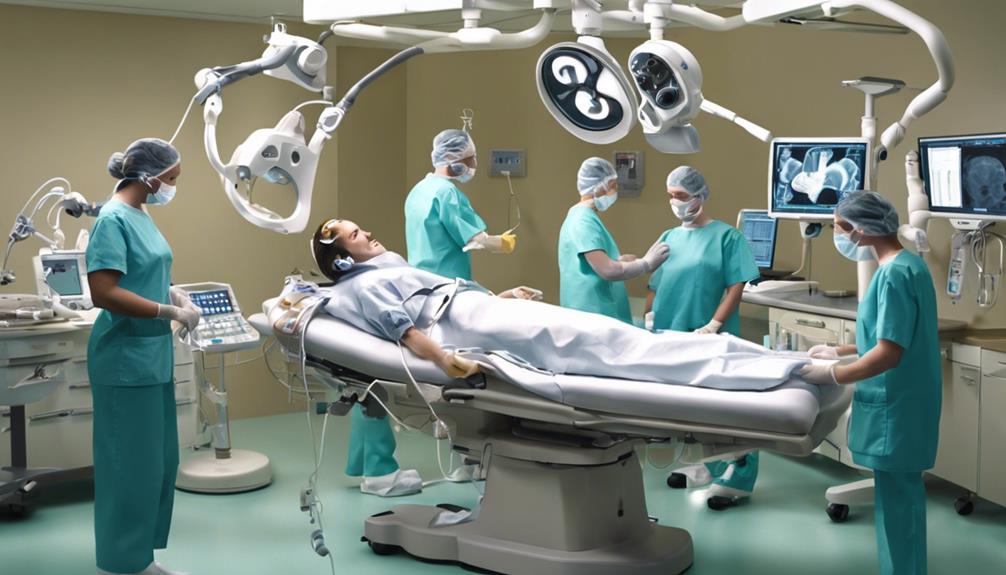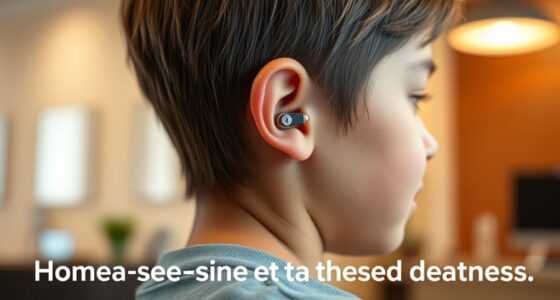When you open the instruction booklet for Cochlear Implants, a gentle hum fills the room, almost like the beginning of a brand new day. Experience this unique moment of hope and transformation as you embark on this journey. Start your day feeling energized and inspired by the possibilities that lie ahead.
Exploring the intricacies of this transformative technology, we found ourselves intrigued by the array of considerations that go into the decision-making process.
From the intricate workings of implant systems to the pivotal role of the Cochlear Implant Team, each section shed light on a different aspect of this remarkable journey.
Curiosity piqued, we were drawn into a world where sound becomes more than just a sensation—it becomes a lifeline.
Key Takeaways
- Cochlear implants consist of internal and external components for stimulating auditory nerve fibers.
- Evaluation for cochlear implant selection includes electrode configurations, speech processing, and stimulation modes.
- A multidisciplinary team collaborates for candidacy assessment, surgery, and programming.
- Cochlear implants improve spoken word recognition with individualized outcomes and evolving criteria.
Technology and Process Overview
Cochlear implants, comprised of internal and external components designed to stimulate auditory nerve fibers, represent a significant advancement in treating hearing loss. The internal portion is surgically placed under the skin behind the ear, with electrodes inserted into the cochlea to facilitate electrical stimulation of the auditory nerve. On the other hand, the external components include a microphone, speech processor, and transmitter that captures and processes sound, converting it into electrical signals for the internal implant to stimulate the auditory nerve. This process allows individuals with hearing loss to regain awareness of speech and sounds in their environment.
The electrical stimulation provided by cochlear implants is essential for bypassing damaged hair cells in the inner ear and directly stimulating the auditory nerve fibers. This stimulation enables improved speech perception and sound awareness in individuals who may not benefit from traditional hearing aids. Understanding the technology and process behind cochlear implants is crucial for individuals considering this intervention for managing hearing loss.
Cochlear Implant Systems and Selection

Exploring various cochlear implant systems involves evaluating electrode configurations, speech processing capabilities, and stimulation modes to tailor interventions for individualized outcomes. Cochlear implants work by stimulating the auditory nerve through an electrode array placed in the cochlea.
When selecting a system, factors such as specific electrode array configurations, speech processing strategies, and stimulation modes must be considered to achieve optimal results. For instance, Nucleus systems have advanced from 22-channel designs to the Nucleus 24 Contour, offering advantages in monopolar stimulation. On the other hand, Clarion systems provide unique electrode array configurations and stimulation modes for customized performance.
Additionally, variances in speech coding strategies between Nucleus and Clarion systems impact sound perception. By carefully weighing these selection considerations, individuals can achieve individualized outcomes that align with their specific hearing needs and preferences. It's crucial to understand the nuances of each system to make informed decisions that optimize the benefits of cochlear implant technology.
The Cochlear Implant Team
When assembling the team for cochlear implant procedures, a collaborative effort among professionals from various disciplines is essential to ensure comprehensive care and successful outcomes. The cochlear implant team typically includes an audiologist, otolaryngologist, speech-language pathologist, and psychologist. These specialists work together to assess candidacy, perform surgery, program the device, provide rehabilitation, and monitor progress. Multidisciplinary communication and coordination are crucial for achieving positive cochlear implant outcomes. The team engages closely with patients and their families to offer continuous support throughout the implantation process. Regular team meetings and ongoing communication help optimize outcomes and address any challenges faced by individuals with cochlear implants.
| Role | Responsibilities | Importance |
|---|---|---|
| Audiologist | Assess candidacy, program the device, monitor progress | Vital for device optimization |
| Otolaryngologist | Perform surgery, ensure proper implantation | Critical for surgical success |
| Speech-Language Pathologist | Provide rehabilitation, aid in communication skills development | Essential for speech development |
| Psychologist | Offer psychological support, address emotional aspects | Important for mental well-being |
| Multidisciplinary Team | Collaborate, communicate, coordinate efforts among all team members | Key to comprehensive care |
Evaluation and Candidacy Criteria

In determining eligibility for cochlear implants, thorough evaluation of hearing loss severity, speech recognition abilities, and medical history is crucial. When considering candidacy criteria for cochlear implants, several factors come into play:
- Severe to profound sensorineural hearing loss
- Limited benefit from hearing aids
- Willingness to commit to the implant process
Children as young as 12 months can now be considered for cochlear implantation, thanks to evolving FDA approvals and improved outcomes. To determine suitability for cochlear implant surgery, individual evaluation by an audiologist and otolaryngologist is essential.
Additionally, ongoing technological advancements and expanded criteria have led to improved outcomes and increased access to cochlear implants for a wider range of individuals. The collaborative efforts of healthcare professionals and advancements in technology continue to enhance the candidacy evaluation process for cochlear implants.
Outcomes and Considerations
Enhancing communication outcomes and considering various factors is crucial when evaluating the effectiveness of cochlear implants. Cochlear implants have shown significant improvements in spoken word recognition, leading to enhanced communication abilities for many recipients.
The evaluation process for candidacy is individualized, taking into account evolving criteria and outcomes associated with cochlear implants. Multichannel stimulation and programming are common features in different cochlear implant systems, aiding in improved speech perception.
Variations in performance among cochlear implant systems can be attributed to differences in electrode configurations, speech processing strategies, and stimulation capabilities. Efforts to optimize outcomes focus on enhancing speech coding strategies and tailoring electrode configurations to specific cochlear implant systems.
Frequently Asked Questions
What Is the 60 60 Rule for Cochlear Implants?
We aim for 60% sentence recognition at 60 dB with cochlear implants. This benchmark assesses speech understanding in quiet settings. Achieving this goal indicates good communication abilities.
The rule helps us adjust settings for optimal speech understanding. Monitoring progress guides rehabilitation efforts and enhances outcomes for users.
What Must I Avoid Now I Have a Cochlear Implant?
We need to avoid exposing our cochlear implants to excessive moisture, such as swimming or showering without protective covers.
We should steer clear of using magnetic devices near our implant as they can interfere with its function.
It's important to avoid sudden impact or pressure on the implant site to prevent damage or dislodgement.
Sharp objects near the implant area should also be avoided to prevent accidental harm.
Prolonged exposure to high-intensity magnetic fields can affect the implant's functionality.
What Are the Basics of Cochlear Implants?
When it comes to cochlear implants, the basics involve understanding that they're advanced devices designed to help individuals with severe hearing loss. These implants consist of internal and external components that work together to provide a sense of sound.
Bilateral implants are often recommended for those with deafness in both ears. They've been shown to greatly improve language skills, especially when implanted early in children.
What Are the 3 Criteria for Qualifying for a Cochlear Implant?
We must meet three main criteria to qualify for a cochlear implant: severe to profound sensorineural hearing loss, limited benefit from hearing aids, and a commitment to the implantation process. These factors are crucial in determining suitability for surgical implantation, ensuring optimal outcomes, improved speech perception, and enhanced quality of life.
Evaluation by an audiologist and otolaryngologist is necessary to assess candidacy based on hearing loss profiles, communication needs, and potential benefits.
Conclusion
In conclusion, cochlear implants are like a key that unlocks a world of sound for those who are deaf or hard of hearing. With advancements in technology and a dedicated team of professionals, individuals can experience life-changing benefits.
It's important to carefully consider candidacy criteria, outcomes, and follow post-implantation care for optimal results. Remember, the sound of success is just a cochlear implant away!











